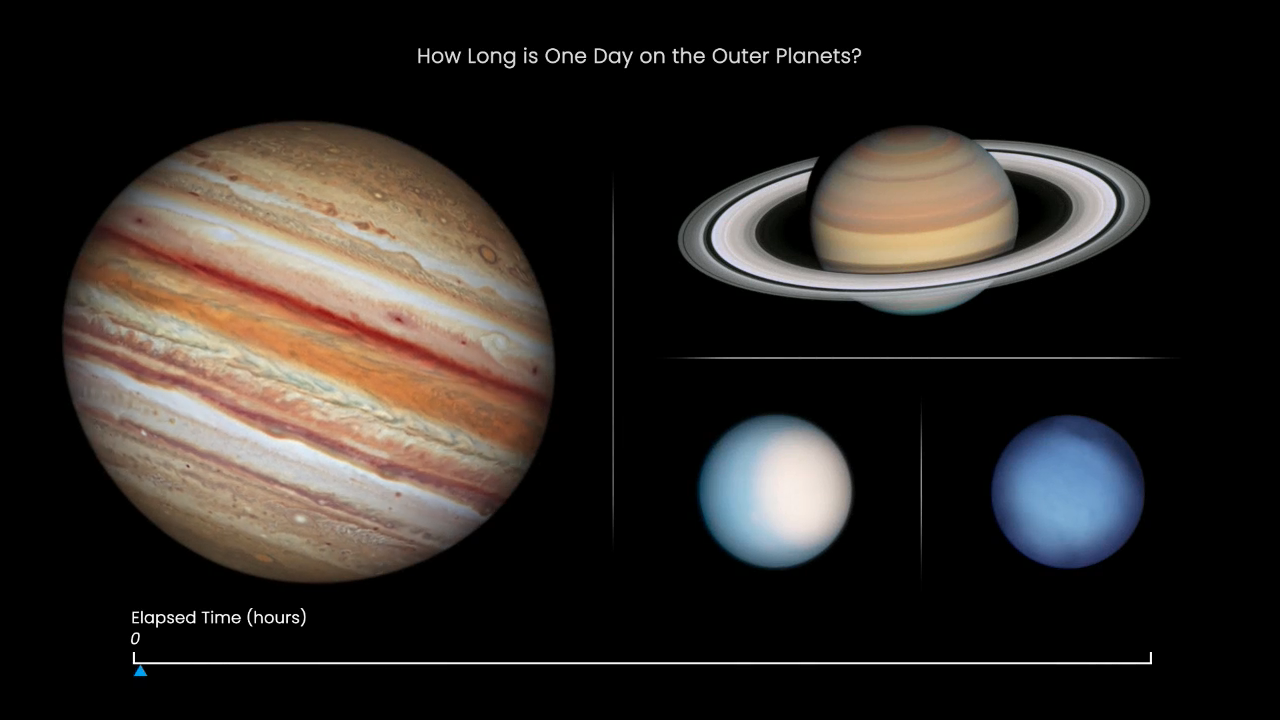1 min read
Jupiter

Hubble’s September 4th photo of Jupiter displays the ever-changing landscape of its turbulent atmosphere, where several new storms are making their mark, and the pace of color changes near the planet’s equator is continuing to surprise researchers.
The planet’s equatorial zone has remained a deep orange hue for a much longer time, compared to previous darkening episodes. While the equator has changed from its traditional white or beige appearance for a few years now, scientists were surprised to find the deeper orange color to persist in Hubble’s recent imaging, instead expecting the zone to lose its reddish haze layer.
Just above the equator, researchers note the appearance of several new storms, nicknamed “barges” during the Voyager era. These elongated red cells can be defined as cyclonic vortexes, which vary in appearance. While some of the storms are sharply defined and clear, others are fuzzy and hazy. This difference in appearance is caused by the properties within the clouds of the vortexes.
Researchers also note that a feature dubbed “Red Spot Jr.” (Oval BA), below the Great Red Spot, where Hubble just discovered winds are speeding up, is still a darker beige color, and is joined by a string of white, anticyclonic storms to the south.
About the Object
- DistanceDistanceThe physical distance from Earth to the astronomical object. Distances within our solar system are usually measured in Astronomical Units (AU). Distances between stars are usually measured in light-years. Interstellar distances can also be measured in parsecs.At the time of the observations, the planet was 4.045 AU from Earth (about 376 million miles)
- DimensionsDimensionsThe physical size of the object or the apparent angle it subtends on the sky.Jupiter is approximately 89,500 miles across along its equator
About the Data
- Data DescriptionData DescriptionProposal: A description of the observations, their scientific justification, and the links to the data available in the science archive.
Science Team: The astronomers who planned the observations and analyzed the data. "PI" refers to the Principal Investigator.The HST observations include those from program 16266 (A. Simon)
- InstrumentInstrumentThe science instrument used to produce the data.WFC3/UVIS
- Exposure DatesExposure DatesThe date(s) that the telescope made its observations and the total exposure time.04 Sep 2021
- FiltersFiltersThe camera filters that were used in the science observations.F395N, F502N, F631N
- Object NameObject NameA name or catalog number that astronomers use to identify an astronomical object.Jupiter
- Object DescriptionObject DescriptionThe type of astronomical object.Planet
- Release DateNovember 18, 2021
- Science ReleaseHubble’s Grand Tour of the Outer Solar System
- CreditNASA, ESA, Amy Simon (NASA-GSFC), Michael Wong (UC Berkeley); Image Processing: Joseph DePasquale (STScI)

These images are a composite of separate exposures acquired by the WFC3 instrument on the Hubble Space Telescope. Several filters were used to sample medium wavelength ranges. The color results from assigning different hues (colors) to each monochromatic (grayscale) image associated with an individual filter. In this case, the assigned colors are: Blue: F395N, Green: F502N, Red: F631N

Related Images & Videos

Outer Planets Rotating (Annotated)
From its vantage point high above Earth's atmosphere, NASA's Hubble Space Telescope has completed this year's grand tour of the outer solar system – Jupiter, Saturn, Uranus, and Neptune. Hubble's snapshots of the outer planets reveal both extreme and subtle changes rapidly...
Share
Details
Claire Andreoli
NASA’s Goddard Space Flight Center
Greenbelt, Maryland
claire.andreoli@nasa.gov





































